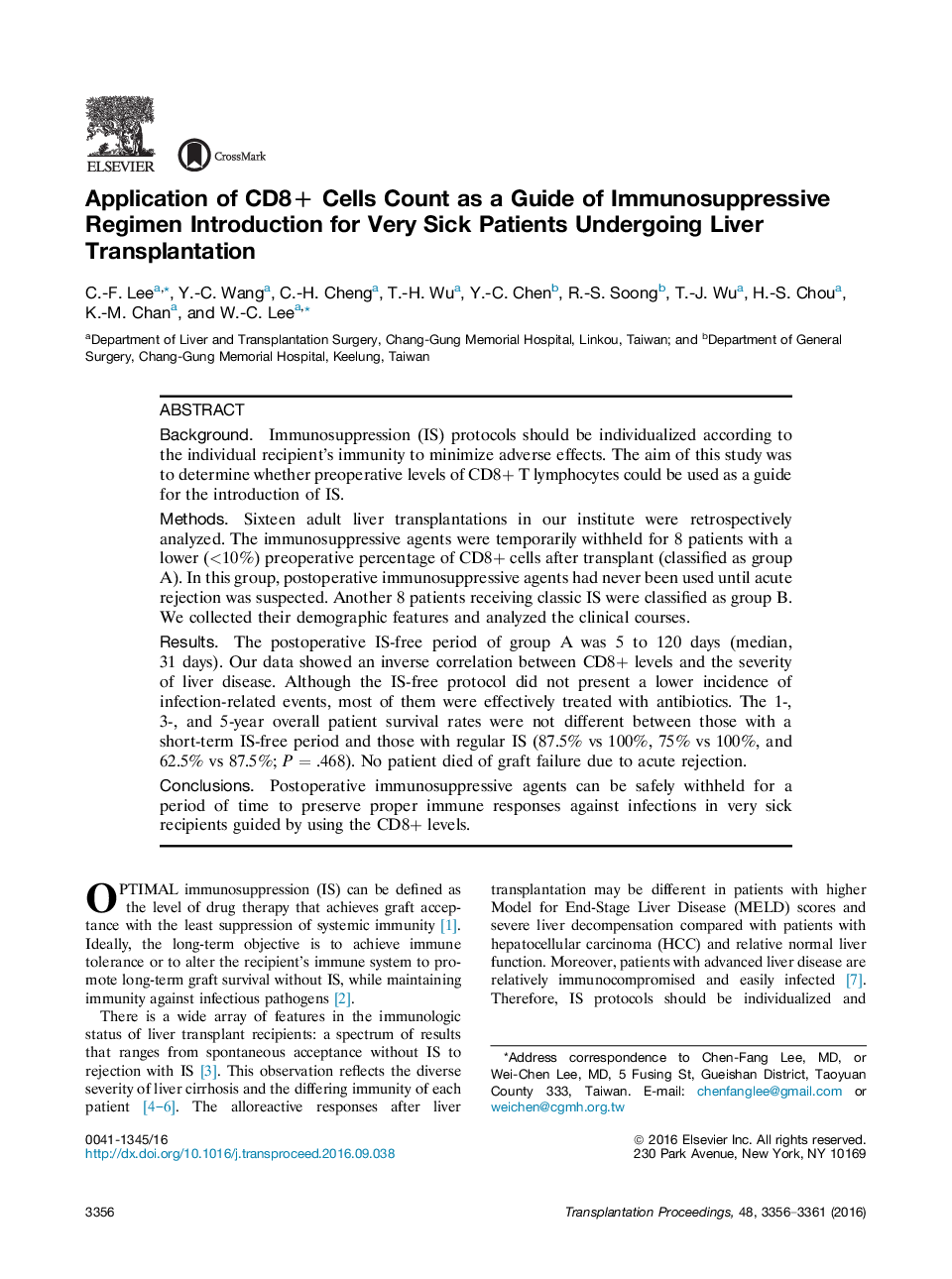| Article ID | Journal | Published Year | Pages | File Type |
|---|---|---|---|---|
| 5729095 | Transplantation Proceedings | 2016 | 6 Pages |
â¢CD8+ T cells can be applied to reflect the severity of liver disease.â¢Clinical immunosuppressive strategy can be tailored according to patients' level of preoperative CD8+ cells to minimize drug-related complications.â¢Postoperative immunosuppressive agents can be safely withheld for a period of time in very sick recipients guided by using the CD8+ levels.
BackgroundImmunosuppression (IS) protocols should be individualized according to the individual recipient's immunity to minimize adverse effects. The aim of this study was to determine whether preoperative levels of CD8+ T lymphocytes could be used as a guide for the introduction of IS.MethodsSixteen adult liver transplantations in our institute were retrospectively analyzed. The immunosuppressive agents were temporarily withheld for 8 patients with a lower (<10%) preoperative percentage of CD8+ cells after transplant (classified as group A). In this group, postoperative immunosuppressive agents had never been used until acute rejection was suspected. Another 8 patients receiving classic IS were classified as group B. We collected their demographic features and analyzed the clinical courses.ResultsThe postoperative IS-free period of group A was 5 to 120 days (median, 31Â days). Our data showed an inverse correlation between CD8+ levels and the severity of liver disease. Although the IS-free protocol did not present a lower incidence of infection-related events, most of them were effectively treated with antibiotics. The 1-, 3-, and 5-year overall patient survival rates were not different between those with a short-term IS-free period and those with regular IS (87.5% vs 100%, 75% vs 100%, and 62.5% vs 87.5%; PÂ = .468). No patient died of graft failure due to acute rejection.ConclusionsPostoperative immunosuppressive agents can be safely withheld for a period of time to preserve proper immune responses against infections in very sick recipients guided by using the CD8+ levels.
